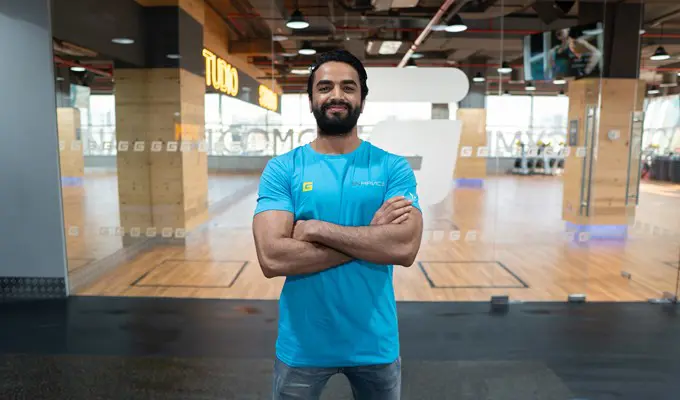WHY SHOULD I TRAIN ABS?
The core muscles are amongst the most important in the body. It doesn’t matter how strong and healthy your extremities are, if your core is weak, your body will be weak as a unified whole. The core muscles maintain good posture, keep your lower back strong, healthy, and pain free, resist motion, generate force, keep your body stable, and help to protect your vital internal organs. GymNation's personal trainers will assist you in finding the best core workouts! Join the best gym in Dubai and get started on your fitness journey!
When talking about ‘the core’, we are referring to a few sets of muscles. These are:
- The transverse abdominus
- The rectus abdominus
- The internal obliques
- The external obliques
SIGN UP FOR YOUR FREE DAY PASS TODAY!
Keeping these core muscles strong and stable will improve athletic performance. Power generated in the extremities – the limbs, broadly speaking – travels through the core. If the core muscles cannot allow this transference, overall movement will be impaired. In addition, the spine will need to be neutral and protected in order for your limbs to generate any force. This requires a strong core. To improve your core strength, search for the best ab workouts!
A good core brace is also vital for strength athletics. You need to be able to breath and brace, expanding and solidifying your core to a certain extent, in order to transfer power stably. If you have a weak core, there is no way that you will be squatting or overhead pressing what you should be able to.
Force transference isn’t just about what you can generate, either. Force can come from an external force. Your core’s job in large part is to keep you safe under the influence of such external forces. If your body is forced to rotate, it will be resistance and safe force transference through your obliques that will keep you upright, safe, and able to maintain posture.
The best way to train the core is to perform unstable movements. For example, unilateral work like lunges will force the core to keep the body stable as different forces are pushed through separate planes of movement. The same will be true of stability exercises like planks, awkward planks, and so forth. Exercises like these will work the deep, transverse abdominis muscle tissue.
You will also want to include movements that force you to brace against a force coming from one side. For example, side planks will force you to maintain solid posture against the desire to collapse downwards. This will work the obliques.
Then there are exercises in force generation. Crunches and leg raises, for instance, use the rectus abdominis and hip flexors in concert to initiate and control movements. Medicine ball tosses from a twisted position will do the same for your obliques.
The core can be worked often, for long periods. If you regularly use a full range of compound, resistance exercises in your training, you are likely already doing so. Simply add a few extra, core specific exercises in at the end of each session, or devote a full workout to training the core.
AB & CORE EXERCISES
Your core muscles are incredibly important. They play key roles on your balance, stability and ability to transfer force through your body. Large, compound movements, general athleticism and coordination and balance will all be improved by strengthening them.
When your core is weak, muscles from other parts of your body step in to compensate. This will lead to diminished performance and may lead to injury. Power will also not be able to move properly through your body – during squats, for example, the strength in your legs won’t be able to meet any kind of stability in your torso, thus stopping it from being fully realised.
Choosing correct ab exercises and including them regularly in your training will strengthen your core will make a profound difference to your results and progress. Balance will be improved, as will your ability to use the strength in your limbs to full effect, and you will be far less susceptible to injury.
CRUNCHES
Build up strength and stamina whilst working on a chiselled six pack with a core classic – crunches.
Main muscles used:
- Rectus abdominis
- Transverse abdominis
- Hip flexors
SIDE PLANK ROWS
Test and build your core, emphasising oblique strength and shoulder stability, with side plank rows.
Main muscles used:
- Obliques (inner and outer)
- Transverse abdominis
- Back
- Shoulders
- Glutes
AB WHEEL ROLL OUTS
Challenge your core with one of the toughest torso exercises going – the ab wheel roll out. This will work your deep core muscles harder than pretty much every other core exercise going, whilst also training the interplay between your core, back and triceps.
Main muscles used:
- Rectus abdominis
- Transverse abdominis
- Hip flexors
- Back
- Triceps
Your core muscles have a huge impact on your balance and stability, by building strength here you will be creating an even balance throughout your body. When you have a weak core, strength from other muscles gets used instead to compensate, which in turn could lead to injury. By choosing the correct core exercises you will not only be blasting those abs but also strengthening and engaging your pelvis, lower back and hips.
Sameer Shaikh
Personal Trainer, GymNation Al Quoz

















































































